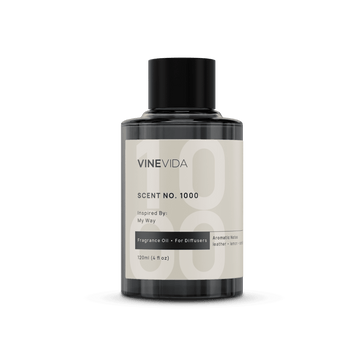With the popularity of essential oils rising, interest in aromatherapy accessories is also increasing. One such example is diffusers. There are literally thousands of diffusers available in the marketplace, each operating differently. It makes sense to also take into account what the aromatherapy and essential oil community leaders say about how to use essential oils in a diffuser alongside manufacturers’ operating instructions.
Here’s a quick rundown on the most popular type of diffusers and what they do. Firstly, there is the ultrasonic diffuser. They use ultrasonic vibrations to break apart the water and essential oils before sending them into the air as a mist. Next, there are candle burners, which as the name suggests use a candle to heat the oils allowing them to evaporate into the air. Some candle burners require water, others do not.
There are atomizing diffusers, which require no water and atomize the essential oils into the air as microparticles. There are heat diffusers, which have water in a small chamber along with a few drops of oil. The water is heated, and as the temperature of the water rises, the essential oils evaporate due to their volatile nature. There are many and varied styles of diffusers, each with its own strengths, weakness, and esthetics. Regardless of which you choose, ensure you consider the following:
How To Use Essential Oils in A Diffuser
It seems simple enough, add some essential oils into your diffuser, and away you go. However, each type of diffuser has a different capacity for the oils. Follow the manufacturer’s instructions when it comes to adding your drops. Most only require 4-5 drops of an oil or blend. The atomizing diffuser has a whole bottle of oil attached to it, so you tend to use more oils using this style of diffuser. It has no water to dilute it, you are diffusing your oils at full strength essentially.
There is a perception that if you add more oils, you’ll get a stronger smell and they’ll work better. The opposite is true. Use only a few drops, and it will work on your mind and mindset, even if you can’t discernibly smell it. If you are adding an essential oil blend into your diffuser, you will probably smell the lighter notes first. In aromatherapy and perfumery, we call these top notes. The middle notes will be noticed second, and lastly, the lingering aroma will be the base notes. Base notes are generally thicker oils.
Keep in mind the thickness of each oil. Top notes such as citrus and leaf oils tend to be quite thin, so will diffuse easily. Base notes or root oils such as Vetiver tend to be thicker, and can stick in your diffuser. This can affect the efficiency of your diffuser. They can ruin the motor of the diffuser, and you’ll need to replace it sooner. Cleaning your diffuser regularly is important.
Before you begin to diffuse, make sure you know and understand both the properties and contraindications of the essential oils you have chosen. Some can be irritating, others may interact with prescribed medications.
Check the age of your oils. Avoid using expired or old oils that can irritate your nose, mouth and throat.
How Much is Too Much?
Robert Tisserand, a pioneer of the aromatherapy industry, has a specific protocol of how to use essential oils in a diffuser. He recommends diffusing for just 30 minutes before taking a break for an hour. This is just a guideline and so we’ve collated some other salient thoughts about how to use essential oils in a diffuser that you might also want to bear in mind.
Consider the size of the space you are diffusing in. In a small room, 30 minutes will be plenty of time to feel the effects of the oils, and to enjoy its aroma. In larger rooms, you can be a bit freer with time limits. Car diffusers are becoming increasingly more popular, so diffusing for only a few minutes would be advisable as the aroma can become too overwhelming for the driver.
Have you heard of Olfactory Fatigue? This happens when you are in a space and can no longer discern the aroma of it. People often think this might be a sign that it's time to add more oils to their diffuser, but this is not wise. Your olfactory system doesn’t notice the smell anymore, because your brain has closed itself off to it. This is a good opportunity to switch the diffuser off or to leave the space for a short while. Interestingly, when you return, you will notice the smell again.
How To Use Essential Oils In a Diffuser if You have Pets
We leave pets vulnerable when we diffuse essential oils in enclosed spaces. It is important to allow animals the opportunity to leave the room if being around the smell doesn’t suit them. Leave doors open and observe to notice if they start acting abnormally.
Make sure you read about essential oils and pets before you start diffusing. Many vets suggest not using oils around pets, especially cats which lack the liver enzyme required to metabolize certain oils constituents. Actually, most essential oils are safe around cats, except for ones that are high in a chemical group called phenols. Their livers seem to struggle to assimilate. The main oils you want to avoid are: eucalyptus, tea tree, cinnamon, citrus oils, peppermint, pine, wintergreen, and ylang ylang. For dogs, things can be less urgent, as long as they have freedom to move away from the scent when they are done.
Cleaning your Diffuser
Cleaning your diffuser regularly will help it run better and hopefully last longer. We suggest doing so every second month. Check the manufacturer's instructions for information on how to do this. If none are available:
- Make sure your diffuser is switched off.
- Fill the water chamber halfway with distilled water.
- Add a tablespoon of vinegar, then turn on and diffuse for about 5 minutes.
- Turn off, empty the liquid out, and wipe over with an alcohol wipe. This will help remove any sticky leftover residue from the thicker oils.
How To Diffuse Essential Oils in Public Spaces
Be mindful of who else is around you as you. Do you have older people with you? Are there young children around? Do pets frequent the space? Are you apprised of all the medical information of those sharing the space with you?
Diffusing in public spaces such as shops, hospitals and schools require consideration too. There are specific guidelines around how to use essential oils in a diffuser if you are working in hospitals, schools, or other public places. Really, one should gain permission from each person entering that space before you diffuse.
In a classroom, you should gain permission from every student and parental authority before you begin diffusing. Most won’t have any concerns, but some may have allergies or medical conditions where being exposed to essential oils might negatively affect their health.
For a small number of people, oils that have relaxing and calming properties can have the opposite effect. Exposure can trigger emotional outbursts, which could be problematic for people with conditions like ADHD for example. Other oils are associated with triggering epileptic episodes.
Smells spark memories. So, diffusing lavender to help a hospital ward sleep may prompt one patient to recall an upsetting memory of their parents or grandparents for example. The effect on them would not be relaxing, on the contrary. They could become very distressed.
Finally, there are people who may be allergic or hypersensitized to essential oils. We are opening ourselves up to troubles when we diffuse without consideration to these types of people and events.
Ecological Considerations of Essential Oils Choices
There are a number of oils we should consider using more mindfully since they are produced from plants on the threatened species list. There are several trees that are now considered endangered, and we should be making sure that we are using the oils mindfully, and that the oils are sourced from sustainable sources. Common ones are Rosewood, Spikenard, and Cedarwood Atlas. Certain Frankincense species too should be considered for spiritual and medicinal uses rather than simply room fragrance, to protect the ever-dwindling natural supplies. We certainly aren’t saying don’t use these oils, simply that you use them in a considered and mindful way.
Conclusion
Using diffusers is a simple and a great way to use your essential oils. Considering the bigger picture of how to use essential oils in a diffuser ensures safety for everyone. It’s important to be mindful of other people’s circumstances and needs as well as our own. This care helps us to grow our love and understanding of the oils. Your home will smell amazing, and all people within it will benefit.














